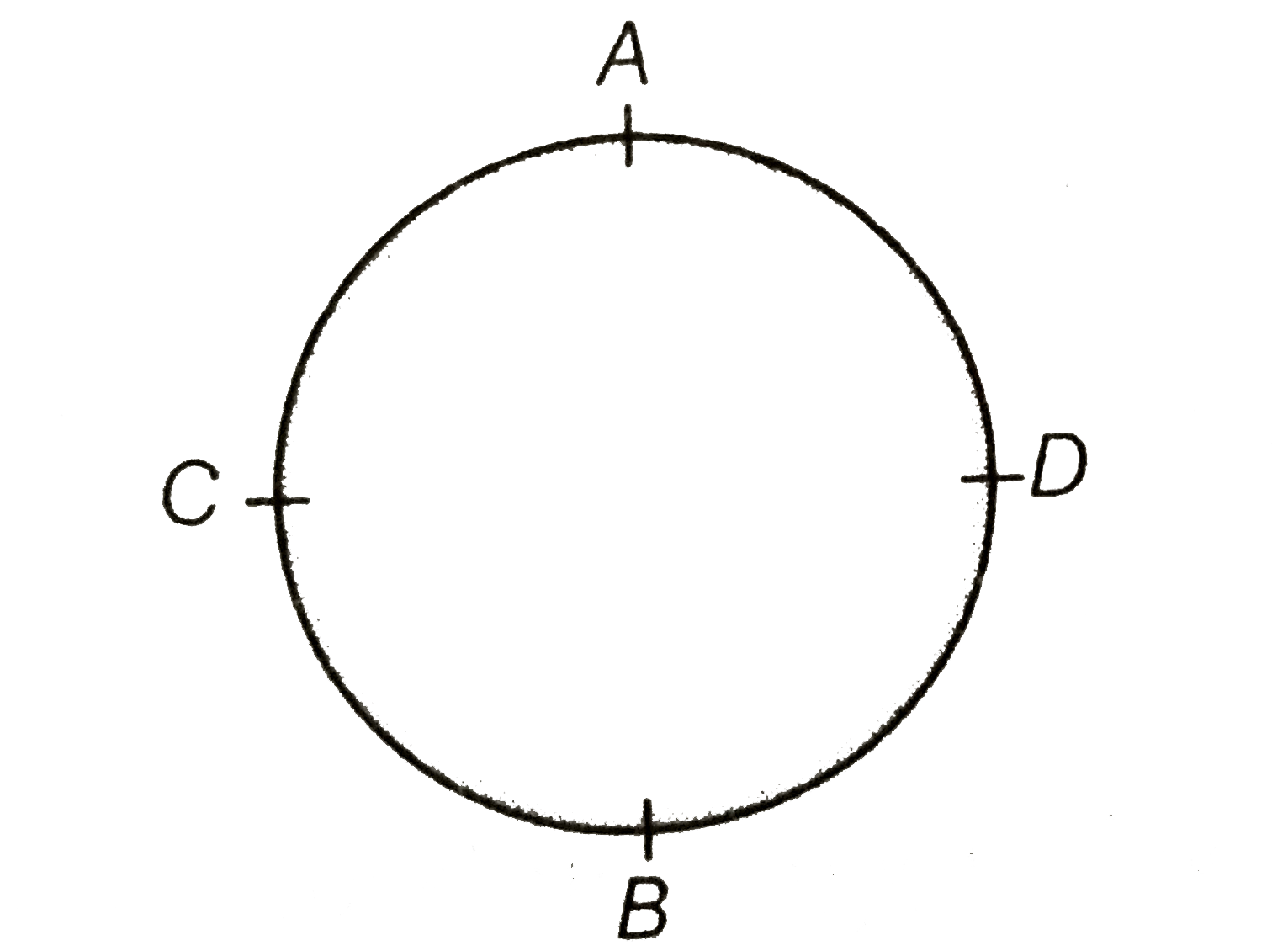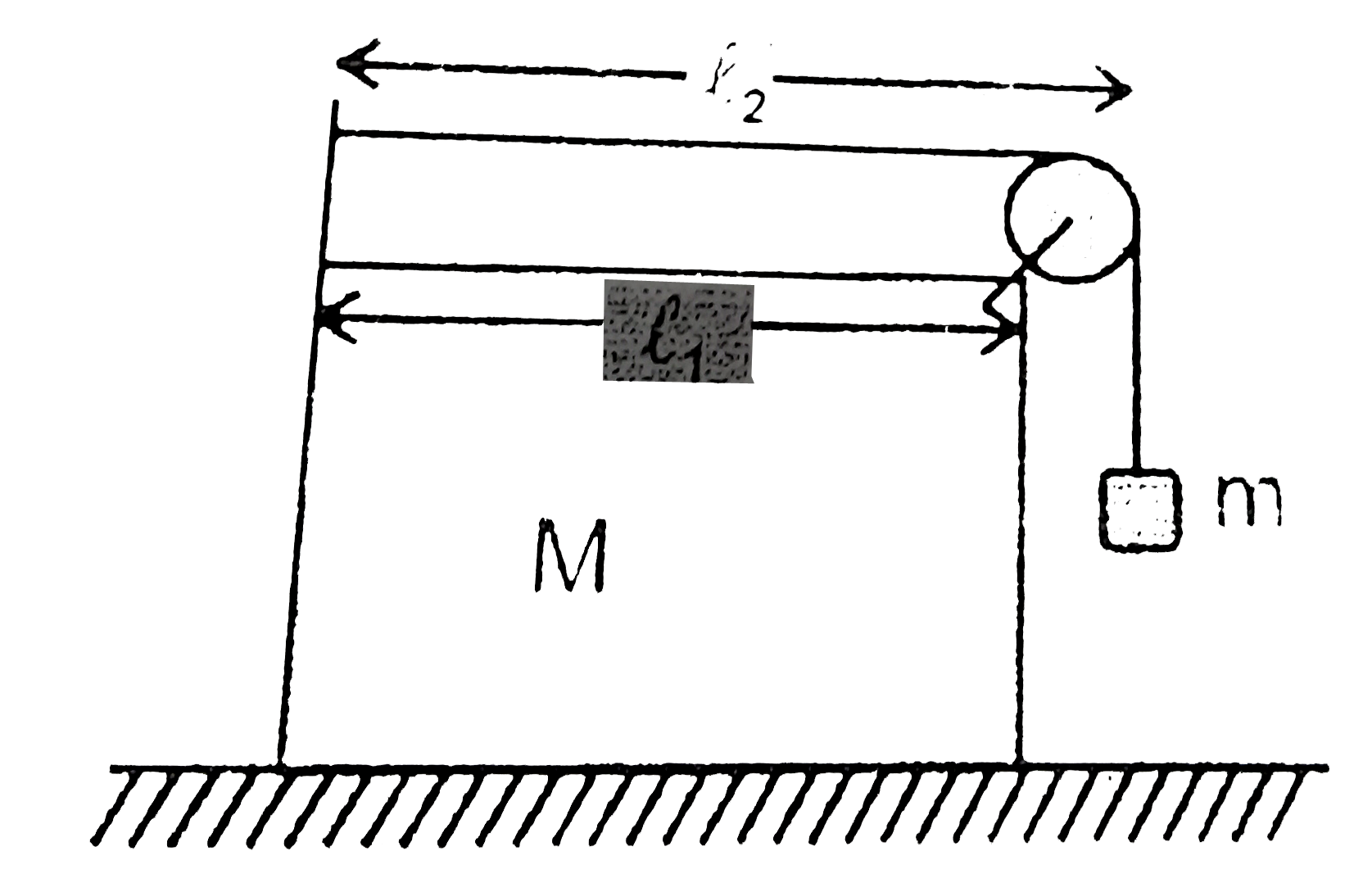A string passing over a smooth pulley carries a stone at one end, while its other end is attached to a vibrating tuning fork and the string vibrates forming loops. When the stone is immersed in water loops are formed. The specific gravity of the stone is
To find the specific gravity of the stone based on the given conditions, we can follow these steps:
1. Understanding the Problem:
- We have a string passing over a smooth pulley with a stone at one end and a vibrating tuning fork at the other.
- Initially, the string vibrates forming 8 loops.
- When the stone is immersed in water, the string vibrates forming 10 loops.
- We need to find the specific gravity of the stone.
2. Relating Velocity, Frequency, and Wavelength:
- The velocity of a wave on the string can be expressed as:
v=f⋅λ
- For the first case (8 loops), we denote the wavelength as λ1:
L=8⋅λ12⟹λ1=L4
- For the second case (10 loops), we denote the wavelength as λ2:
L=10⋅λ22⟹λ2=L5
3. Calculating Velocities:
- The velocities in both cases can be expressed as:
v1=f⋅λ1=f⋅L4
v2=f⋅λ2=f⋅L5
4. Finding the Ratio of Velocities:
- The ratio of the velocities is:
v1v2=f⋅L4f⋅L5=54
5. Relating Tension and Specific Gravity:
- The tension in the string when the stone is hanging freely (first case) is:
T1=m⋅g=ρs⋅V⋅g
- When the stone is immersed in water (second case), the tension is:
T2=m⋅g−FB=ρs⋅V⋅g−ρw⋅V⋅g
- Thus:
T2=(ρs−ρw)⋅V⋅g
6. Finding the Ratio of Tensions:
- The ratio of the velocities can also be expressed in terms of tensions:
v1v2=√T1T2⟹(54)2=T1T2
- This gives:
2516=ρs⋅V⋅g(ρs−ρw)⋅V⋅g
- The V⋅g cancels out:
2516=ρsρs−ρw
7. Solving for Specific Gravity:
- Rearranging gives:
25(ρs−ρw)=16ρs
- Expanding and rearranging:
25ρs−25ρw=16ρs⟹9ρs=25ρw
- Therefore:
ρs=259⋅ρw
- Since the density of water ρw is approximately 1 g/cm³:
ρs≈259≈2.78
8. Finding Specific Gravity:
- The specific gravity SG is given by:
SG=ρsρw=25/91=259≈2.78
Final Answer:
The specific gravity of the stone is approximately 2.78.
- We have a string passing over a smooth pulley with a stone at one end and a vibrating tuning fork at the other.
- Initially, the string vibrates forming 8 loops.
- When the stone is immersed in water, the string vibrates forming 10 loops.
- We need to find the specific gravity of the stone.
- The velocity of a wave on the string can be expressed as:
v=f⋅λ
- For the first case (8 loops), we denote the wavelength as λ1:
L=8⋅λ12⟹λ1=L4
- For the second case (10 loops), we denote the wavelength as λ2:
L=10⋅λ22⟹λ2=L5
- The velocities in both cases can be expressed as:
v1=f⋅λ1=f⋅L4
v2=f⋅λ2=f⋅L5
- The ratio of the velocities is:
v1v2=f⋅L4f⋅L5=54
- The tension in the string when the stone is hanging freely (first case) is:
T1=m⋅g=ρs⋅V⋅g
- When the stone is immersed in water (second case), the tension is:
T2=m⋅g−FB=ρs⋅V⋅g−ρw⋅V⋅g
- Thus:
T2=(ρs−ρw)⋅V⋅g
- The ratio of the velocities can also be expressed in terms of tensions:
v1v2=√T1T2⟹(54)2=T1T2
- This gives:
2516=ρs⋅V⋅g(ρs−ρw)⋅V⋅g
- The V⋅g cancels out:
2516=ρsρs−ρw
- Rearranging gives:
25(ρs−ρw)=16ρs
- Expanding and rearranging:
25ρs−25ρw=16ρs⟹9ρs=25ρw
- Therefore:
ρs=259⋅ρw
- Since the density of water ρw is approximately 1 g/cm³:
ρs≈259≈2.78
- The specific gravity SG is given by:
SG=ρsρw=25/91=259≈2.78
The specific gravity of the stone is approximately 2.78.
Similar Questions
In Melde's experiment , when a string is stretched by a piece of glass it vibrates with 7l∞ps . When the glass piece is completely immersed in water the string vibrates in 9l∞ps. What is the specific gravity of glass ?
View SolutionA stone in hung in air from a wire which is stretched over a sonometer . The bridges of the sonometer are 40cm apart when the wire is in unison with a tuning fork of frequency 256Hz. When the stone is completely immersed in water , the length between the bridges is 22cm for re - establishing unison . The specific gravity of the material of the stone is
View Solution
Knowledge Check
- Question 1 - Select One
A string fixed at its both ends vibrates in 5 loops as shown in the figure. The total number of nodes and antinodes are respectively
 A5,6B6,5C7,4D4,7
A5,6B6,5C7,4D4,7
A stone is hung in air from a wire which is stretched over a sonometer. The bridges of the sonometer are L cm apart when the wire is in unison with a tuning fork of frequency N . When the stone is completely immersed in water, the length between the bridges is l cm for re-establishing unison, the specific gravity of the material of the stone is
View SolutionThe string AB vibrates in two loops with a tuning fork when block hasngs in air. Now block is completely immersed in water, the string vibrates in three loops with same tuning fork. The specific gravity of block is :
 View Solution
View SolutionA stone attached to one end of string is revolved around a stick so that the string winds upon the stick and gets shortened. What is conserved ?
View SolutionIn the sonometer experiment , a tuning fork of frequency 256Hz is in resonance with 0.4m length of the wire when the iron load attached to free end of wire is 2kg. If the load is immersed in water , the length of the wire in resonance would be ( specific gravity of iron =8)
View SolutionA stone is attached to one end of a string and rotated in verticle cricle .If string breaks at the position of maximum tension, will break at
 View Solution
View SolutionA uniform cubical block of mass M is attached to a pulley. One end of a string, passing over the pulley is fixed to a light pole while is fixed on the bigger block and its another end is attached to a block of mass m as shown in figure. The maximum value of the mass m so that the block does not topple is : (string and pulley are ideal)
 View Solution
View SolutionA block of mass M is placed on a rough horizontal surface. It is connected by means of a light inextensible string passing over a smooth pulley . The other end of string passing over a smooth pulley. The other end of string is connected to a block of mass m. There is no friction between vertical surface and block m

If the coefficient of friction of friction μ is less than the above value, then downward acceleration of block m isView Solution

